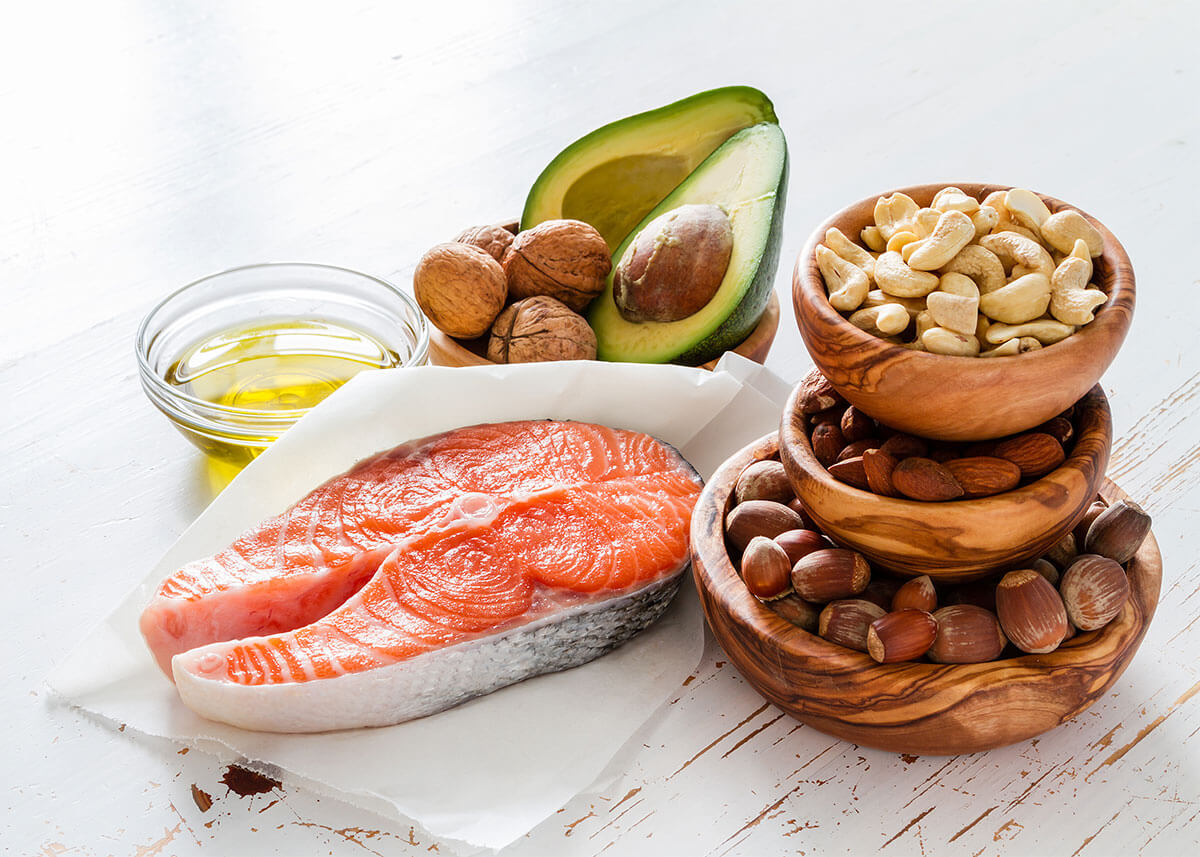
Fat can be our friend and our foe. While there is plenty of literature devoted to the subject of getting rid of fat, it can be hard to find good basic information about this essential (if in some ways bothersome) component of our biology.
As they say, knowledge is power. To help you take full advantage of the friendly side of fat—and outsmart the not-so-friendly side—we’ve put together 5 useful facts about fat in our daily lives. Take a look and see what you can learn:
1. Your total fat cell count levels off once you reach adulthood
It is a myth that we are born with a finite number of fat cells. The body can increase its total number of fat cells throughout the life cycle, but after puberty, that number more or less stays the same throughout adulthood. However, each fat cell is capable of growing up to 10 times in size to store extra fat. When you lose weight, fat cells shrink, but they will not disappear. The more fat cells you have as an adult, the tougher it can be to keep excess weight at bay. This is one reason why parents are encouraged to help their children maintain a healthy weight.
Each fat cell is capable of growing up to 10 times in size to store extra fat.
2. When a fat cell dies, a new one replaces it
Since your body will not readily pack on additional fat cells as an adult, you would think that when a fat cell dies, you would have one less fat cell to worry about. For better or for worse, this doesn’t seem to be the case; your body does replace fat cells as they die. On average, fat cells live 7 to 10 years. While this may seem frustrating at first, it is actually a necessary survival tactic to ensure you have somewhere to store energy.
3. You have to eat fat to stay alive (and store some of it too!)
While few of us think about fat in our bodies being a good thing, we couldn’t live without it! Eating fat is necessary for the absorption of many essential vitamins and minerals. We also need to maintain a certain level of body fat to complete basic biological functions. Too little fat can impair reproductive health, reduce cognitive function, and contribute to constipation. Plus, fat helps to insulate our bodies against cold temperatures. The key is to aim for a healthy body composition—about 21 to 24% of body fat is considered good for a physically fit woman and 14 to 17% for a man.
4. Eating (healthy) fats can help you maintain a slimmer waistline
Remember back in the 1990s when all dietary fat was villainized? Thankfully, nutritional science has come a long way in a short time, and we now know that certain types of dietary fat are good for us.
Omega-3 fatty acids are the superstars of healthy fats. Found mainly in cold water fish (salmon, mackerel, etc.) as well as nuts and flax seeds, omega-3s are associated with a long list of health benefits, from improved mental health to a smaller waistline. Mono-unsaturated fats from nuts, avocados, and olive oil are also linked to heart health and lower risk for metabolic diseases such as Type-2 diabetes. Plus, moderate consumption of healthy fat can help keep you feeling fuller longer—handy for helping you resist those donuts in the break room!
While considered healthy in small portions, excess consumption of saturated fats found in meat, eggs, and dairy can increase the risk for heart disease. Trans fats, which have been molecularly altered to stay solid at room temperature, are best left off the menu. They can increase the risk for heart disease and are mainly found in highly processed, unhealthy food products.
5. Not all body fat is created equal
Fat accumulates in different ways in our bodies. Fat that lies deeper in our body cavity, behind the abdominal muscles, is called visceral fat. This fat surrounds vital organs and is considered dangerous in excess: visceral fat can increase insulin resistance, leading to a higher risk of diabetes, inflammation, and heart disease.
In contrast, subcutaneous fat is located over the muscle walls and under the skin. This type of fat is responsible for love handles, saddlebags, and other stubborn bulges. While only a healthy diet and exercise can help reduce visceral fat, you actually have a number of options to reduce stubborn subcutaneous fat.
Staying ahead of the fat equation
Just because your fat cell distribution is somewhat set as an adult doesn’t mean that you have to accept bothersome pockets of fat on your body. If eating a healthy diet and getting regular exercising just aren’t cutting it, there are several cosmetic procedures that can reduce fatty bulges and help you get a slimmer, more attractive physique.
Sculpt a better shape with liposuction
Liposuction is a tried-and-true surgery that selectively removes excess subcutaneous fat while sculpting a better contour to an area. The belly, hips, thighs, back, neck, and knees are all popular areas that our experienced plastic surgeons can address with liposuction.
Use fat to your advantage: transfer it!
While stubborn fat seems to stick to our bodies more readily as we age, facial fat can dwindle, causing our facial features to lose youthful volume. A fat transfer takes fat from areas where you don’t want it—such as the belly, hips, or thighs—and relocates a portion of that fat as a filler to help restore volume to the cheeks, lips, or other areas that need it.
All of these procedures offer long-lasting results as long as you maintain your weight.
Do you have more questions about fat, or how you might address unwanted fat on your body? We encourage you contact us! Our friendly staff and experienced, board certified plastic surgeons in Richmond would be happy to help you learn more at consultation.

